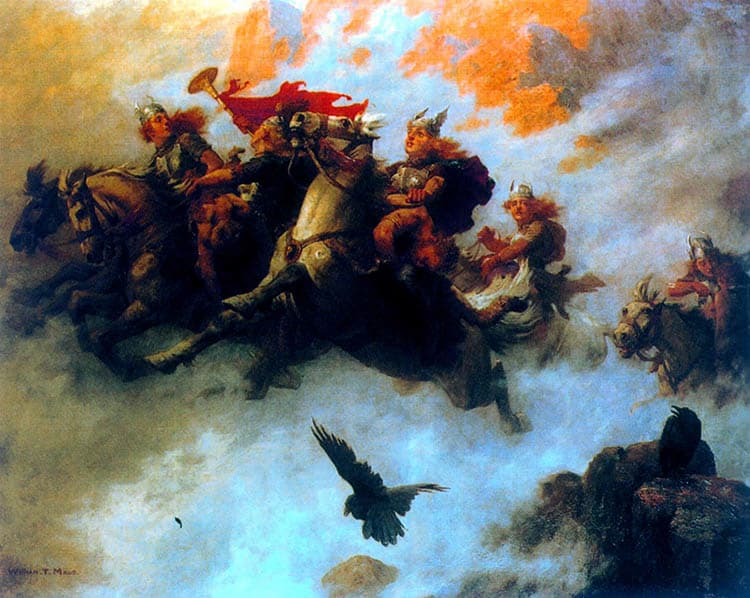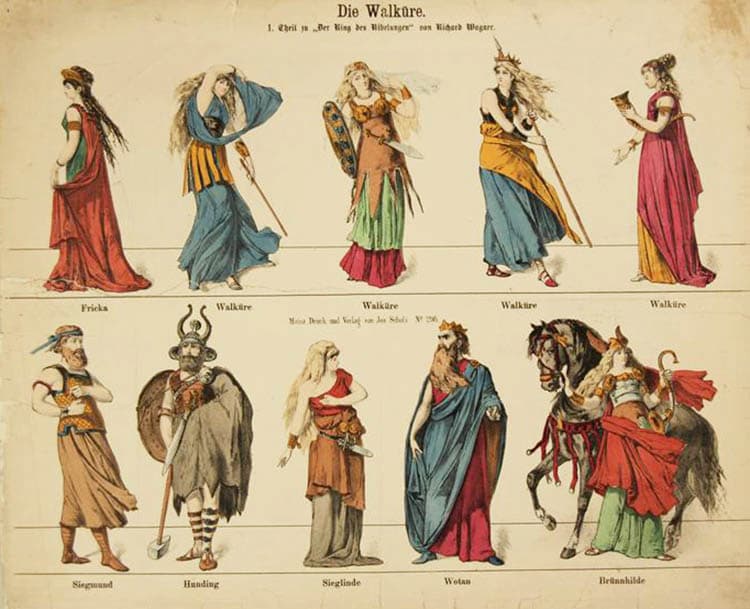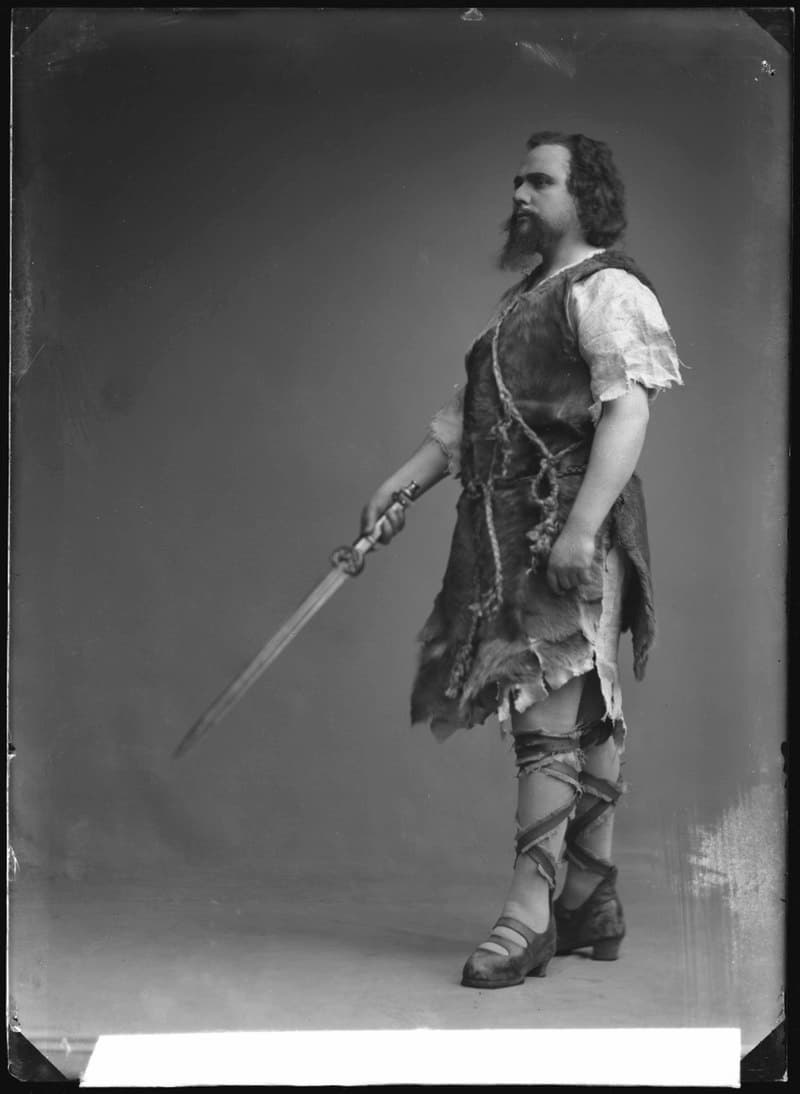Cosima Wagner wrote pointedly in her diary of 1873, “Die Walküre is the most emotional, the most tragic of Richard’s works.”

Richard Wagner
Here as elsewhere, Cosima is responding to the classical theory of drama that Wagner had outlined during the initial conception of the Ring. According to that theory, there has to be an intensification of feeling and a first climax to the drama in Die Walküre. Putting love above all laws, in this case, the incest of the Wälsung twins and Brünnhilde’s defiance of her father, is an attempt to turn away from a loveless world devoted solely to political intrigue and the cold-blooded pursuit of earthly riches. As such, Die Walküre is all about the understanding of the futility of that attempt, and its inevitability of failure. Although the evil dwarf Alberich does not actually appear on stage, we increasingly sense his menacing presence.
Richard Wagner: Die Walküre, “Prelude Act I”
Wagner indirectly introduces a new race of beings; Siegmund and Sieglinde are half divine—half human, and their son Siegfried will eventually overcome Wotan’s power. “I now see that, in order to be fully understood from the stage, I must present the entire myth in visual terms,” wrote Richard Wagner. In the process, Die Walküre became an imposing tragedy in the vast cycle of four interconnected works that make up the “Ring of the Nibelung.”

William T. Maud: The Ride of the Valkyries
Wagner initially envisioned the Ring as a single opera called Die Götterdämmerung, and as a narrative of revolution in which the corrupt order of gods is overthrown by the liberating power of human love. Working backwards, Wagner decided that he needed another opera to tell of Siegfried’s youth, and then decided to add the story of Siegfried’s conception and of Brünhilde’s attempts to save Siegfried’s parents. Finally, he added a prelude that told of the original theft of the Rheingold. “In this series of prequels, Die Walküre becomes the dramatic center of gravity, and through Wagner’s musical characterizations we perceive this shift of perspective taking place.”
Richard Wagner: Die Walküre, “Act I Finale”
The first prose sketch for Die Walküre probably dates from November 1851. Initially, Wagner referred to the new work as “Siegmund und Sieglinde,” but he quickly changed it to the familiar title. That sketch developed into a prose draft—an extended description of the story including dialogue—in May 1852. Wagner worked on the verse draft between June and July 1852, and the final poem was incorporated into the private printing of the entire Ring text in February 1853.

Costumes of Richard Wagner’s Die Walküre
Before Wagner had finalized the text for the Ring, he was already sketching some of the music. On 23 July 1851 he wrote on a loose sheet of paper what was to become the best-known leitmotif in the entire cycle: the theme from the “Ride of the Valkyries.” As Wagner had included some indication of the orchestration in the draft, he decided to move straight on to developing a full orchestral score in January 1855 without bothering to write an intermediate instrumentation draft as he had done for Das Rheingold. This was a decision he was soon to regret, as numerous interruptions including a four-month visit to London made the task of orchestrating more difficult than he had expected. If he allowed too much time to elapse between the initial drafting of a passage and its later elaboration, he found that he could not remember how he had intended to orchestrate the draft.
Richard Wagner: Die Walküre “Ride of the Valkyries”
As a result, Wagner had to compose some passages again from scratch. In the end, the full score was finally completed on 20 March 1856. It took another 14 years, however, for Die Walküre to first appear on stage. The premiere took place, as a stand-alone opera, at the “Königliches Hof und National-Theater in Munich on 26 June 1870. As a scholar has suggested, Die Walküre is the music drama that most satisfactorily embodies the theoretical principles of Oper und Drama.” A thoroughgoing synthesis of poetry and music is achieved without any notable sacrifice in musical expression.

Siegmund with the sword “Nothung” the Royal Swedish Opera, 1914
Indeed, many of the most powerful passages of the work achieve their effect precisely through the organic relationship of music and text. The turbulent prelude that opens the work depicts at once a raging storm and the mental convulsions that are soon to shake the participants in the drama. Essentially, Wagner provides a tone poem that gradually carries the vaporous sound of battle enveloping the world into the mountains, and the world of the gods. The musical tension increases through a series of modulations, and the motif for the god of thunder rings out in the brass, first in the Wagner tubas. And we all know the rest of the story, as Wotan is unable to prevent Siegmund’s death, and for defying her father, Brünhilde is kissed to sleep with infernal flames enclosing the entire mountains.
For more of the best in classical music, sign up for our E-Newsletter

Die Walküre’s Act 1 is THE perfect model for all Wagner’s mature works. Not a mis-step anywhere, even with the two Italianate (i.e., melody-based) arias in Scene III.